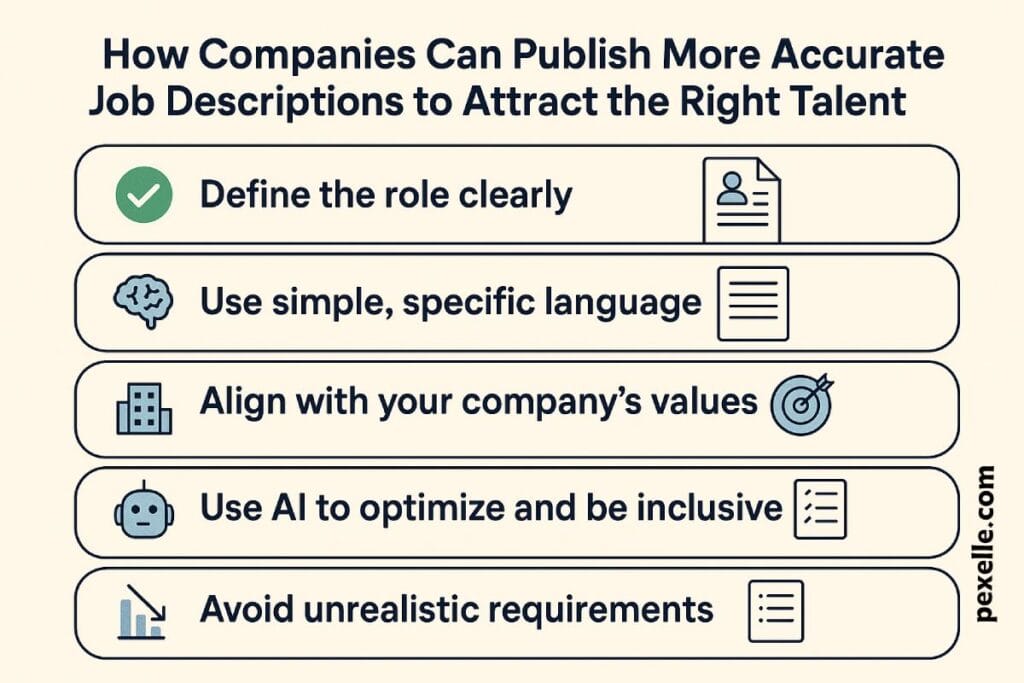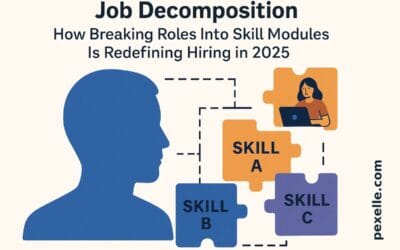How Companies Can Publish More Accurate Job Descriptions to Attract the Right Talent

In today’s competitive labor market, publishing an accurate job description is more than just listing tasks—it’s about strategically aligning talent with organizational needs. Vague or overly generic listings can lead to mismatched hires, high turnover, and wasted resources. Companies that invest in crafting precise and thoughtful job postings are far more likely to attract qualified candidates who align with both the role and company culture.
🧩 Start With a Clear Understanding of the Role
Before writing any job post, employers must deeply analyze the position’s core functions. This involves engaging team leads, current employees in the role, and HR to outline:
- Key responsibilities: What will the person do daily, weekly, monthly?
- Skills and competencies: What technical or soft skills are non-negotiable?
- Performance metrics: How will success be measured?
Tools like job task analysis, organizational charts, and internal job audits can offer the clarity needed to define a role beyond buzzwords.
✍️ Use Specific, Jargon-Free Language
A job description should be written in a way that is accessible and specific. Avoid vague phrases like “team player” or “fast-paced environment” unless they are contextualized. Instead, replace them with:
- “Collaborates with cross-functional teams including design and engineering.”
- “Manages multiple project timelines with weekly sprint planning.”
Also, avoid internal acronyms or cultural lingo unfamiliar to outsiders. The goal is clarity, not confusion.
📈 Align With Business Goals and Culture
Job ads shouldn’t exist in a vacuum. They should reflect both the strategic objectives of the business and its workplace culture. This includes:
- Highlighting how the role contributes to company growth.
- Mentioning values such as sustainability, innovation, or remote-first collaboration.
- Being transparent about expectations regarding autonomy, flexibility, or learning pace.
Such alignment attracts candidates who resonate with the company mission and are more likely to thrive in the role.
🛠️ Leverage Data and AI to Refine Descriptions
Forward-thinking companies use data analytics and AI tools to analyze past hiring success and optimize job postings. These tools can:
- Compare language with top-performing job ads.
- Recommend inclusive language that broadens the talent pool.
- Suggest industry-relevant keywords to boost visibility on platforms like LinkedIn or Indeed.
This data-driven approach ensures job descriptions are both human-readable and algorithmically optimized.
💬 Include Realistic Requirements and Benefits
Overstuffing job descriptions with a laundry list of “required” skills can deter qualified applicants. Studies show women and minorities tend to apply only when they meet 90–100% of criteria, while men apply at 60%. Instead:
- Differentiate between must-have and nice-to-have qualifications.
- Include compensation range, growth opportunities, and benefits (e.g., remote work, mental health support, or upskilling programs).
- Mention DEI (Diversity, Equity, and Inclusion) commitments if applicable.
Clarity and realism increase both trust and applicant diversity.
🚀 Conclusion
A well-crafted job description is a powerful recruitment tool. By clearly defining responsibilities, using precise language, aligning with company values, leveraging data, and being transparent about expectations, organizations can attract candidates who are not only qualified but truly compatible. In a world where talent is a key differentiator, accuracy in hiring communication is no longer optional—it’s a strategic necessity.
Source : Medium.com




